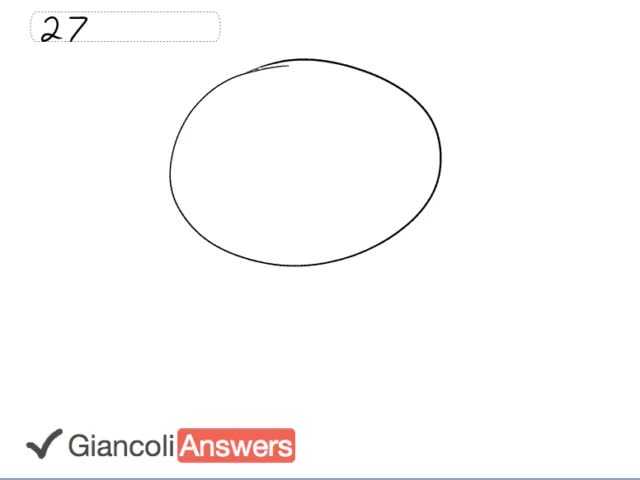
b)

In order to watch this solution you need to have a subscription.
We have this particle traveling in a circle, let’s draw the circle. The radius of the circle is two point nine meters, let’s draw the particle here and we’ll draw the acceleration vector. Normally for a circular motion we’d draw the acceleration vector towards the centre but in this case it has a tangential component so we’ll draw it like this. We’re meant to draw it at thirty two degrees with respect to its direction of motion so its direction of motion is tangential so the angle theta equals thirty two degrees. The radial component of the acceleration, that’s toward centre, is going to be given by ‘aR’: ‘aR’ equals ‘a’ sine theta where as the tangential component ‘at’ is ‘a’ cosine theta. First we’ll figure out its speed along the circle, so for part a given tat we know that the radial acceleration equals ‘v’ squared over 'r' where ‘v’ is the speed along the circle we can solve for ‘v’: multiply both sides by 'r' and take the square root of both sides so ‘v’ equals the square root of ‘aR’ times ’r’ which is the radial component of acceleration we’re considering and this gives us the square root of 'r' times ‘a’ times sine theta, multiplying ‘a’ by sine theta gives us this radial component of the acceleration so the square root of two point nine meters that’s the radius times one point zero five meters per second squared that’s acceleration times sine thirty two gives us one point two seven meters per second. So that’s our answer for part a. For part b we need to figure out what its speed will be in two seconds assuming that the tangential acceleration is constant. So we have: the final speed equals the initial speed plus acceleration times time. Its initial speed we just found so it’s two seconds from the time when it was one point two seven meters per second, two seconds later beyond that what's the speed? So ‘vi’ is one point two seven and the tangential acceleration is going to be acceleration times cosine theta and time is two seconds. So: ‘vf’ is ‘vi’ plus ’a’ times cosine theta times time which is equals one point two seven meters per second plus one point zero five meters per second squared times cosine of thirty two times two point zero zero seconds so we have the final speed is three point zero five meters per second. In the 5th Edition the changes you'll have to make are to the radius and that’s going to be a radius of two point seven meters and that changes the fifth edition answer to three point zero one meters per second.